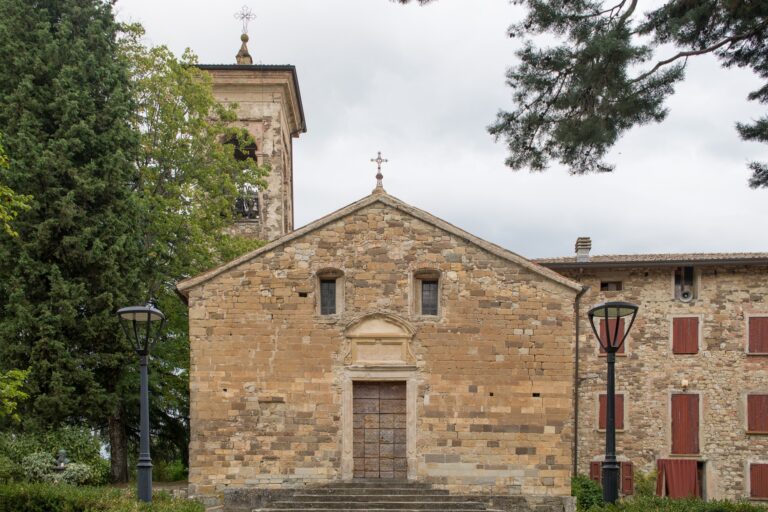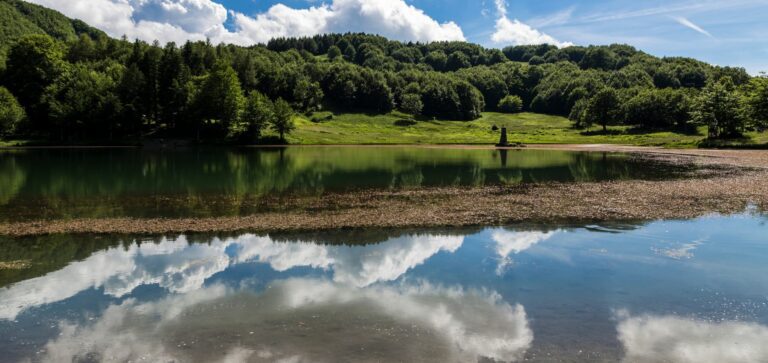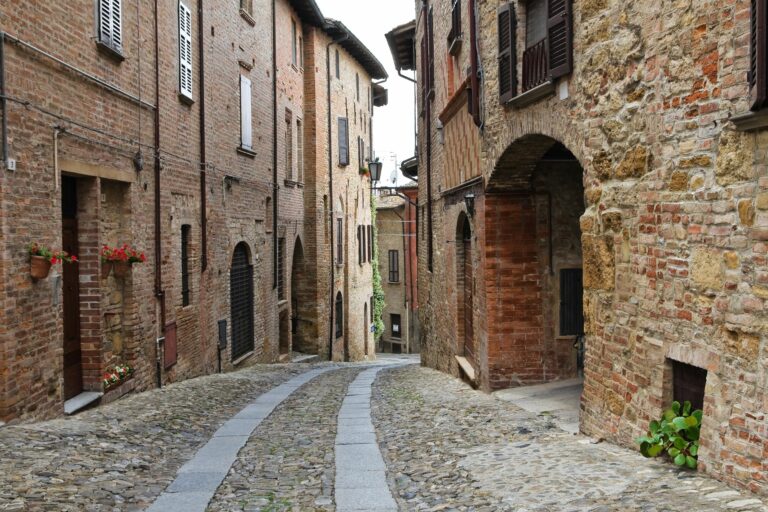In the plain between Reggio Emilia and Modena, at the time of the Renaissance, there spread a constellation of small capitals marked by a magnificent heritage of urban settings, palaces and churches, which still fascinates the visitor who admires it in all its beauty. These small capitals, which during the Italian Renaissance characterized with art and culture places and territories not far from the city of Reggio, are, in addition to Scandiano, which we know well and have already mentioned: Correggio, Gualtieri, Guastalla, Novellara and San Martino in Rio. Great artists frequented these courts, or even were born or lived there, such as: the painters Antonio Allegri (known as Il Correggio) and Lelio Orsi, the poets Boiardo and Ariosto, the sculptor Leone Leoni, and the literary men of letters Aretino, Tasso, and Bembo. Although their autonomy ended long ago, these ancient lordships still retain the mark of past splendor.
CORREGGIO
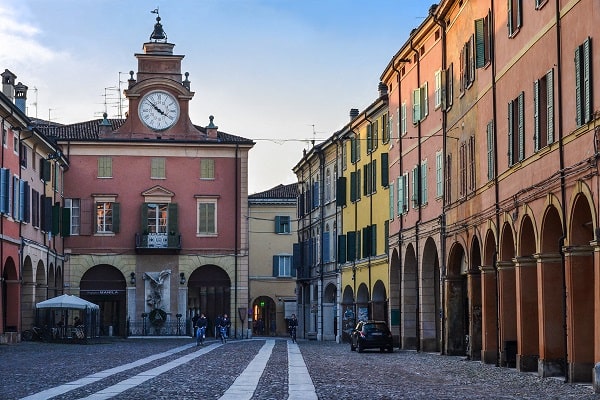
A fief of the family of the same name, Correggio is a delightful town that was the birthplace of the painter Antonio Allegri (1489) and was the destination of many poets including Ariosto. The first document referring to the Da Correggios, the House that ruled over this territory uninterruptedly for about seven centuries, reaching its zenith with Nicolò da Correggio (1450-1508), Veronica Gambara (1485-1550) and the painter Il Correggio (1489/1494-1534), dates back to 1009. Urbanistically completed in the 17th century, Correggio has a still well-preserved historic center rich in squares and churches. Its monuments and places of interest include: the Palazzo dei Principi, as well as the city’s most representative Renaissance building of Ferrara influence, with a stunning Renaissance grotesque portal, where the Museo Civico Il Correggio is now housed; the Basilica of San Quirino, dedicated to the city’s patron saint; Correggio Art Home, located in the restored premises of Correggio’s birth house; and the Bonifazio Asioli Theater, rebuilt in the mid-19th century.
GUALTIERI

A fief of the Bentivoglio family, former lords of Bologna, Gualtieri is a classic example of the small Po Valley capital of the Renaissance. It is a town rich in historical evidence and is a true masterpiece of late 16th-century town planning and architecture. Its name first appears during the Lombard domination as “Castrum Vultureno” and then as “Castrum Walterii,” a toponym that historians believe is linked to the Lombard Gualtiero, sent by King Agilulfo in 602 to conquer Mantua. Of particular interest is Piazza Bentivoglio, among the most beautiful in Italy, which was built between 1580 and 1610 by Ferrara architect Giovan Battista Aleotti, known as l’Argenta. In the center of the stunning square stands the Palazzo Bentivoglio, built between 1594 and the early 1600s by Ippolito, the eldest son of Cornelio Bentivoglio, and inside which is housed the Museum dedicated to the “naive” painter A. Ligabue. Other monuments and places of interest include: the Civic Tower, completed between 1599 and 1602; the Collegiate Church of S.Maria della Neve, also designed by Argenta; and the Church of the Conception, adorned in 1650 with a splendid carved wooden ceiling.
GUASTALLA
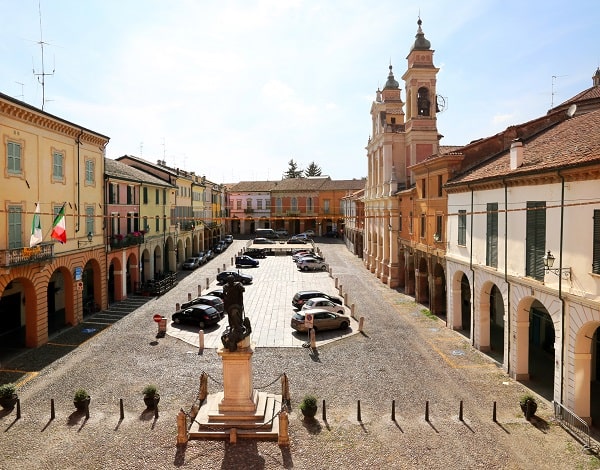
The main center of the Reggio Emilia lowlands, Guastalla is a valuable town that retains the charm and appeal of an ancient capital. The earliest archaeological evidence for a settlement in this area seems to date back to the Etruscan period, although it is in the early medieval period that the town’s name is first mentioned. In 1539 it was purchased by Ferrante Gonzaga, who refounded it as an ideal city, characterized by a central cross of streets scenically concluded by the facade of a church. The ancient Via Gonzaga leads to Piazza Mazzini, the old Piazza Maggiore and heart of the city, dominated by the monument to Ferrante I Gonzaga by Leone Leoni. The square is overlooked by: the Duomo or Co-cathedral of St. Peter the Apostle, a 16th-century work by Francesco Capriani, with a late 19th-century façade; the largely rebuilt Ducal Palace, inside which is housed the Museum of the City of Guastalla; and the Town Hall, with models of ancient units of measurement under the portico. Also worth a visit are the churches of the Cross, Annunciation and Servants, and the neoclassical-style Municipal Theater, dating from 1671.
NOVELLARA
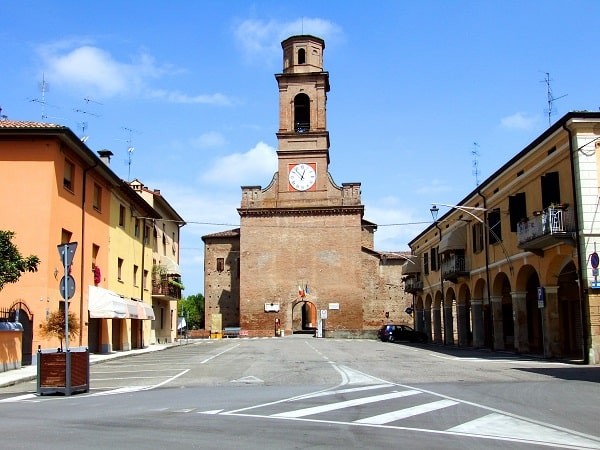
The longest-lived of the seignories in the Gonzaga sphere, Novellara is a charming town set in the Po Valley called “Bassa Reggiana” a few kilometers from the Po River. From the particularly frequent mists brought by the swamp, it is likely that it originated the same name of the town called Nubilaria, Nuvelaria before taking on the current one of Novellara. Of considerable interest is its historic center, characterized by the imposing bulk of the Rocca, the most important monument of Gonzaga-era Novellara. Built beginning in 1385 by Guido Gonzaga, the Rocca houses the 19th-century Municipal Theater and the Gonzaga Museum with an extraordinary collection of 16th-century apothecary jars and paintings by Lelio Orsi, a native of the town. Other significant examples of its past include: the large Collegiate Church of S. Stefano, erected in 1567 to a design by Orsi and enlarged in the 18th century; the Sanctuary of the Blessed Virgin of the Fossetta, built in 1654 to a design by architect Gian Battista Negri; and the Church of the Blessed Virgin of the People, dating from the 18th century.
SAN MARTINO IN RIO

Located in the Po Valley, about 15 km from Reggio Emilia, San Martino in Rio is a place rich in history and culture, whose visit offers several insights: not only monuments, but also important museums, personalities and traditions. Charlemagne donated these lands to the Church of Reggio Emilia, which, in turn, ceded them to Bonifacio di Canossa, and in 1115 Countess Matilde di Canossa, Bonifacio’s daughter, enfeoffed the territory to the noble Reggio Emilia family of the Roberti da Tripoli, who maintained control until 1430, when they were ousted by Nicolò d’Este. Its symbolic monument is the Rocca, which, after being destroyed by Frederick Barbarossa in 1167, was rebuilt with mighty towers and passed to the Roberti family of Reggio Emilia. Inside, the remarkable 1395 chapel dedicated to St. John the Evangelist stands out. Today the castle houses the Civic Library and the Museum of Agriculture with one of the most interesting ethnographic collections in the region. Also worth a visit: the Automobile Museum and adjoining Scuderia, with about 40 cars, a dozen motorcycles and a few bicycles; and the Collegiate Church of Saints Martin and Venerio, located in the heart of the historic center.
For more information visit the official web site of Piccole Capitali del Rinascimento.
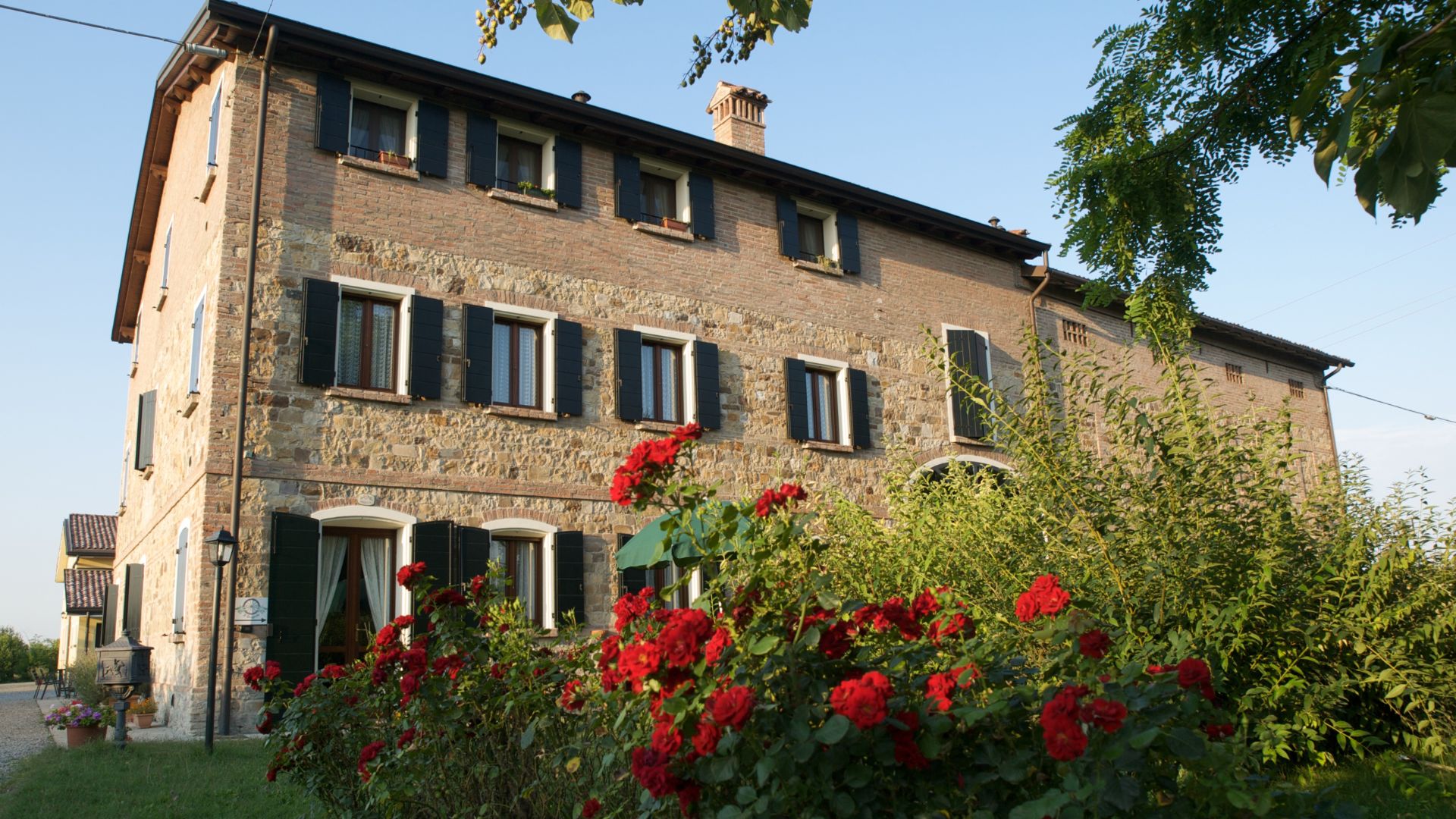
AGRITURISMO IL BRUGNOLO
Welcome to il Brugnolo
If you’re looking for completely independent apartments surrounded by greenery you really are in the right place here!
In fact, Brugnolo is immersed in the green nature of the Emilian countryside. For your relaxation, for that of your children, and again for the runs of your 4-legged friends, you will have 6000 square meters of park at your disposal!

